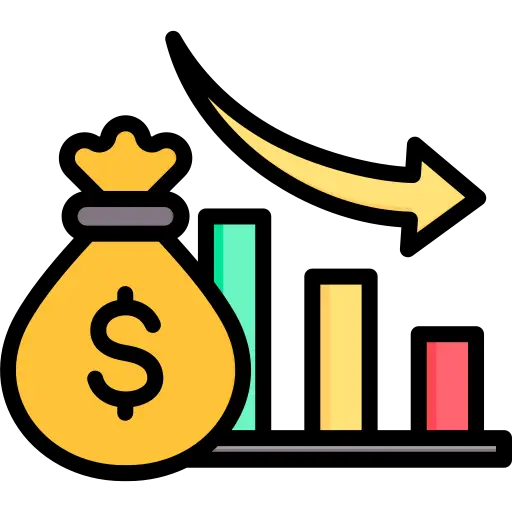Verified Insights
Precision-driven research you can trust. We uphold rigorous data validation processes to ensure every report is reliable and based on credible sources.
+91 9425150513 (Asia) support@24lifesciences.com
MARKET INSIGHTS
The global Compounded Bioidentical Hormone Therapy market size was valued at USD 1,300 million in 2024. The market is projected to grow from USD 1,380 million in 2025 to USD 1,945 million by 2031, exhibiting a CAGR of 6.1% during the forecast period.
Compounded bioidentical hormones are synthetic hormones designed to mimic the molecular structure of hormones naturally produced by the human body. These therapies, which include estrogen, progesterone, and testosterone, are often customized for patients to address hormonal imbalances with minimal side effects. The increasing preference for personalized medicine and the rising prevalence of hormonal disorders, such as menopause-related symptoms and andropause, are driving demand.
The market growth is further supported by expanding applications in anti-aging therapies and increasing awareness of hormonal health. However, regulatory scrutiny and safety concerns regarding compounded formulations pose challenges. Leading players like BioTE Medical, SottoPelle, and Pfizer are investing in R&D and strategic partnerships to enhance product efficacy and compliance. The retail pharmacy segment currently holds the largest market share, while online pharmacies are emerging as a fast-growing distribution channel due to convenience and accessibility.
Rising Prevalence of Hormonal Imbalances and Menopause to Propel Demand for Compounded Bioidentical Hormone Therapy
The global compounded bioidentical hormone therapy market is experiencing steady growth, valued at US$ 1,300 million in 2024 and projected to reach US$ 1,945 million by 2031, reflecting a compound annual growth rate (CAGR) of 6.1% during the forecast period. This expansion is largely driven by the increasing incidence of hormonal imbalances, particularly among aging populations. Bioidentical hormones, which are chemically identical to those produced by the human body, offer a tailored approach to hormone replacement therapy with minimal side effects, making them appealing for managing conditions like menopause, andropause, and thyroid disorders. As women enter menopause, symptoms such as hot flashes, mood swings, and bone density loss become more common, affecting over 1.1 billion women globally by 2025. This demographic shift underscores the need for effective, personalized treatments that compounded bioidentical hormone therapy provides through custom formulations in forms like creams, gels, and pellets.
Furthermore, the broader pharmaceutical landscape supports this trend, with the global market reaching US$ 1,475 billion in 2022 and anticipated to grow at a CAGR of 5% over the next six years. Within this, biologics accounted for US$ 381 billion in 2022, highlighting the shift toward more natural and body-compatible therapies. Compounded bioidentical options fit seamlessly into this evolution, as they allow pharmacists to adjust dosages based on individual patient needs, often using oestrogen, progesterone, and testosterone as key components. For instance, in the United States, where menopause affects approximately 6,000 women daily, the demand for such therapies has surged, with oestrogen-based compounds holding a significant share of the market at around 40% in 2024. This driver not only boosts market revenue but also encourages innovation in delivery methods to enhance patient compliance and outcomes.
Growing Awareness and Adoption of Personalized Medicine to Accelerate Market Expansion
Personalized medicine is transforming healthcare, and compounded bioidentical hormone therapy stands at the forefront of this movement by enabling treatments customized to genetic and hormonal profiles. The demand for such precision has risen sharply, fueled by greater public awareness through social media, celebrity endorsements, and educational campaigns on women's health. In 2024, the personalized medicine segment within pharmaceuticals is estimated to contribute substantially to overall growth, with bioidentical therapies gaining traction due to their perceived safety over synthetic alternatives. Patients seeking relief from symptoms like fatigue and weight gain associated with hormonal decline are increasingly turning to compounding pharmacies, which offer flexible options not always available in standard FDA-approved products.
Moreover, regulatory support and clinical evidence are bolstering confidence in these therapies. Initiatives by health authorities emphasize the importance of accurate hormone testing to guide therapy, ensuring better patient results. For example, advancements in salivary and blood testing have made it easier to monitor hormone levels, leading to more effective compounding strategies.
➤ The U.S. Food and Drug Administration has been actively reviewing guidelines for hormone therapies to promote safe, individualized approaches, helping clinicians deliver meaningful outcomes for patients experiencing endocrine disruptions.
Additionally, the trend of mergers and acquisitions among key players, such as partnerships between compounding specialists and larger pharmaceutical firms, is set to drive geographical expansion and innovation, projecting sustained growth through 2031.
Expansion in Distribution Channels and Technological Advancements to Fuel Accessibility
The proliferation of diverse distribution channels is enhancing access to compounded bioidentical hormone therapy, making it a key driver for market penetration. In 2024, retail pharmacies account for about 35% of the market share, while online pharmacies are rapidly growing at over 8% annually, driven by convenience and direct-to-consumer models. This shift allows patients in remote areas to obtain custom prescriptions without frequent visits to specialists, addressing barriers in traditional healthcare delivery. Hospital pharmacies, holding around 25% of the segment, continue to play a vital role in acute care settings, particularly for post-surgical hormone management.
Technological advancements in compounding processes, including automated mixing systems and quality control measures, are reducing production times and improving consistency. The overall pharmaceutical industry's focus on R&D, with investments rising due to chronic disease prevalence, indirectly supports this niche. For instance, the integration of digital health tools for remote monitoring of therapy efficacy is encouraging more prescriptions, as patients and providers see tangible benefits in symptom relief and quality of life improvements. These factors collectively position the market for robust growth, aligning with global healthcare demands for patient-centric solutions.
Regulatory Scrutiny and Safety Concerns to Hinder Widespread Adoption
While the compounded bioidentical hormone therapy market shows promising growth, it grapples with notable regulatory and safety challenges that affect development and patient uptake. Compounded medications, by nature, are not subject to the same pre-market approval as FDA-approved drugs, leading to concerns over standardization and potential risks like inconsistent dosing. In the U.S., where North America dominates with over 50% market share in 2024, regulatory bodies have issued warnings about unapproved claims and variability in product quality, prompting closer oversight. This environment demands rigorous compliance, which can slow innovation and increase operational costs for manufacturers and pharmacies alike.
Other Challenges
High Development and Manufacturing Costs
The customization inherent in compounding requires specialized facilities and expertise, driving up expenses. With the global pharmaceutical market facing high R&D costs estimated at 10-20% of revenues these therapies often carry premium prices, limiting accessibility in lower-income regions and deterring broader adoption.
Limited Long-Term Clinical Data
Ethical and scientific debates persist regarding the long-term effects of bioidentical hormones compared to synthetics. Ongoing discussions about cardiovascular risks and cancer associations, based on studies involving millions of patients, create hesitation among prescribers, potentially capping market potential despite growing demand.
Competition from FDA-Approved Alternatives and Market Fragmentation
Intense competition from standardized, FDA-approved hormone therapies poses a significant challenge, as they offer proven efficacy and easier insurance reimbursement. In Europe, where regulations are stringent, compounded options hold only about 20% of the hormone therapy market in 2024, overshadowed by branded products from major players. This fragmentation with numerous small compounding pharmacies lacking scale complicates supply chains and pricing strategies, making it harder for the sector to compete on cost and reliability. Moreover, varying regional guidelines, such as those in Asia where approval processes can take years, further fragment the market and slow global harmonization efforts.
Patient education gaps exacerbate these issues; many remain unaware of the differences between compounded and conventional therapies, leading to preference for familiar options. However, as awareness grows through clinical outreach, addressing these competitive pressures will be crucial for compounded bioidentical hormone therapy to carve out a larger share in the evolving pharmaceutical landscape.
Supply Chain Vulnerabilities and Quality Control Issues
Supply chain disruptions, highlighted by the COVID-19 pandemic, continue to challenge the reliability of raw materials for bioidentical hormones, which rely on plant-derived precursors like yams and soy. In 2022, global supply issues affected pharmaceutical production, causing delays in up to 15% of compounded orders. Quality control remains a hurdle, as manual compounding processes can introduce variability, raising concerns over potency and purity. These vulnerabilities not only increase costs but also erode trust among healthcare providers, who prioritize consistent outcomes for patients managing chronic conditions like osteoporosis or hypogonadism.
Furthermore, the rise in counterfeit products in online channels, accounting for 30% of distributions in some markets, amplifies risks. Tackling these through enhanced traceability and international standards is essential, yet it requires collaborative efforts across the industry to mitigate ongoing challenges.
Lack of Standardization and Reimbursement Barriers to Impede Growth
Compounded bioidentical hormone therapy offers innovative solutions for endocrine health, but its growth is restrained by the absence of uniform standardization across formulations and dosages. Unlike FDA-approved counterparts, these custom products vary by pharmacy, leading to inconsistencies that complicate clinical trials and physician recommendations. In 2024, this lack of uniformity contributes to only 25% penetration in hospital settings globally, as providers favor predictable options. Moreover, reimbursement policies in key markets like the U.S. and Europe often exclude compounded therapies, with insurance coverage limited to under 40% of cases, forcing patients to bear high out-of-pocket costs averaging US$ 200-500 per month.
These restraints are compounded by patent protections on synthetic hormones, which stifle competition and keep prices elevated. While the market projects a 6.1% CAGR, addressing standardization through industry consortia could unlock greater potential, but current fragmentation continues to deter large-scale investments and adoption.
Shortage of Specialized Compounding Expertise and Infrastructure Limitations
The rapid evolution of the pharmaceutical sector demands skilled professionals in compounding, yet a notable shortage persists, restraining market scalability. With an aging workforce and insufficient training programs, only about 60% of pharmacies in North America are equipped for complex hormone compounding in 2024. This expertise gap, worsened by regulatory requirements for sterile environments, limits production capacity and increases error risks, particularly for testosterone and progesterone formulations that require precise handling.
Infrastructure challenges, including outdated facilities in emerging regions like Asia and South America, further hinder expansion. Investments in modern cleanrooms are essential, but high upfront costs often exceeding US$ 1 million per site slow progress. Collectively, these factors cap the market's ability to meet rising demand from an estimated 50 million annual menopause cases worldwide.
Adverse Perceptions and Clinical Evidence Gaps
Persistent negative perceptions stemming from past hormone therapy studies, such as those linking synthetics to health risks, spill over to bioidentical options despite their molecular similarity to natural hormones. In surveys, over 30% of potential users cite safety fears, restraining prescriptions even as evidence mounts for fewer side effects in compounded forms. The dearth of large-scale, long-term studies with most data from observational cohorts involving thousands of patients leaves gaps in proving superiority, allowing skepticism to persist among regulators and clinicians.
However, ongoing research initiatives could bridge this, but until then, these perceptual and evidentiary restraints continue to moderate growth in a market poised for US$ 1,945 million by 2031.
Strategic Partnerships and R&D Investments to Unlock Expansion Potential
The compounded bioidentical hormone therapy market holds substantial opportunities through strategic initiatives by key players, who are increasingly forming partnerships to enhance product pipelines and market reach. With the global pharmaceutical market's biologics segment at US$ 381 billion in 2022, investments in natural hormone alternatives are surging, driven by demand for personalized treatments. Companies like BioTE Medical and SottoPelle are leading with collaborations that integrate advanced testing kits, allowing for precise dosing of oestrogen and progesterone, which together comprise over 70% of the type segment in 2024. These alliances not only streamline supply chains but also facilitate entry into underserved regions, projecting a boost in sales volumes to over 500,000 units annually by 2031.
Additionally, regulatory advancements in gene and hormone therapies are opening doors for innovation. For example, streamlined approval pathways for compounded drugs in Europe could accelerate market entry, offering players like TherapeuticsMD a chance to expand their portfolios.
Emerging Markets and Digital Health Integration for Broader Accessibility
Rising healthcare demands in emerging economies present lucrative opportunities, as Asia-Pacific and Latin America see hormone-related disorders increase with urbanization and dietary shifts. In 2024, these regions account for 25% of the global market, with potential to double by 2031 through localized compounding facilities. Online pharmacies, growing at 10% CAGR, enable direct access, particularly for testosterone therapies targeting men's health, which holds 30% of the application share.
Integration with digital platforms for virtual consultations and adherence tracking further enhances opportunities, allowing providers to monitor therapy efficacy remotely and adjust formulations in real-time. This tech-driven approach could capture tech-savvy demographics, driving revenue growth amid the overall 6.1% market CAGR.
Growth in Wellness and Preventive Healthcare Trends
The surge in wellness-focused healthcare is creating profitable avenues for compounded bioidentical hormone therapy, as consumers prioritize preventive measures against aging-related issues. With chronic diseases driving pharmaceutical R&D funding, therapies addressing hormonal balance align perfectly, especially in North America where wellness spending exceeds US$ 4 trillion annually. Key players like Pfizer and Novo Nordisk are exploring bioidentical extensions, potentially increasing market share through hybrid models combining compounded and branded products.
Moreover, educational campaigns and celebrity influences are demystifying these therapies, encouraging uptake in retail and other channels. As governments fund women's health programs, this trend promises sustained opportunities, supporting the market's trajectory to US$ 1,945 million by 2031.
The global Compounded Bioidentical Hormone Therapy market was valued at $1,300 million in 2024 and is projected to reach US$1,945 million by 2031, at a CAGR of 6.1% during the forecast period. Bioidentical hormones are synthetic hormones chemically identical to those naturally produced by the human body, enabling them to function similarly with minimal side effects. This therapy addresses hormonal imbalances, particularly in menopause, andropause, and other endocrine disorders, gaining popularity for its personalized approach through compounding pharmacies.
Within the broader pharmaceutical landscape, the global market reached $1,475 billion in 2022, anticipated to expand at a CAGR of 5% over the next six years. This growth is fueled by escalating healthcare demands, technological innovations, and the increasing incidence of chronic conditions. Biologics accounted for $381 billion in 2022, while chemical drugs grew from $1,005 billion in 2018 to $1,094 billion in 2022. Key drivers include heightened funding for pharmaceutical development from private and government sources, alongside robust R&D efforts. Challenges such as rigorous regulatory frameworks, substantial R&D expenses, and patent expirations necessitate ongoing innovation to maintain competitiveness. The COVID-19 pandemic accentuated the critical role of vaccine production and resilient supply chains, pushing companies toward greater agility in addressing public health imperatives.
Manufacturers, suppliers, distributors, and industry experts highlight trends like rising demand for customized hormone therapies, evolving pricing dynamics, and product innovations. Drivers encompass growing awareness of hormone-related health issues and advancements in compounding techniques, while challenges involve regulatory scrutiny over compounding practices and potential supply disruptions. This analysis equips stakeholders with insights into sales, revenue, and strategic planning to navigate market opportunities and risks effectively.
Oestrogen Segment Dominates the Market Due to its Widespread Application in Menopause Management
The market is segmented based on type into:
Oestrogen
Progesterone
Testosterone
Oestrogen-based therapies lead due to their critical role in alleviating symptoms like hot flashes and osteoporosis risk in postmenopausal women, supported by extensive clinical adoption. Progesterone segments complement these by balancing hormonal cycles, particularly in combination therapies to mitigate endometrial risks. Testosterone formulations are increasingly vital for addressing age-related declines in both men and women, enhancing energy and libido. Overall, type segmentation reflects tailored solutions meeting diverse patient needs across demographic groups.
Hospital Pharmacies Segment Leads Due to Integrated Clinical Delivery and Patient Monitoring
The market is segmented based on application into:
Hospital Pharmacies
Retail Pharmacies
Online Pharmacies
Others
Hospital pharmacies dominate as they facilitate direct integration with healthcare providers, enabling precise dosing and immediate access for inpatients undergoing hormone assessments. Retail pharmacies support broader community access, offering convenience for ongoing prescriptions. The surge in online pharmacies underscores digital health trends, providing discreet delivery and teleconsultation linkages. Other applications, including specialty clinics, further expand reach, emphasizing personalized compounding's versatility in outpatient settings.
Leading companies in the Compounded Bioidentical Hormone Therapy market include:
SottoPelle
BioTE Medical
Advantage Pharmaceuticals
Full Life Wellness Center
Neuva Aesthetics
Defy Medical
Bio station
Noven Pharmaceuticals
Novartis AG
Pfizer
TherapeuticsMD
Bayer AG
Novo Nordisk
These players drive innovation through advanced delivery systems and expanded portfolios, focusing on safety and efficacy to capture growing demand.
Companies Strive to Strengthen their Product Portfolio to Sustain Competition
The competitive landscape of the compounded bioidentical hormone therapy market remains semi-consolidated, featuring a mix of large pharmaceutical giants, specialized clinics, and emerging players. This structure fosters innovation while allowing established firms to dominate through extensive distribution networks and regulatory compliance. BioTE Medical stands out as a leading player, driven by its pioneering bioidentical hormone pellet therapy and robust global footprint, particularly in North America where it caters to a growing demand for personalized treatments.
SottoPelle Therapy and Defy Medical also commanded a significant market share in 2024, with their growth fueled by innovative compounding techniques and a focus on patient-centric care in the wellness sector. These companies have capitalized on rising awareness of hormone imbalances linked to aging and chronic conditions, integrating telemedicine to expand reach amid evolving healthcare landscapes. Furthermore, the overall market, valued at $1,300 million in 2024 and projected to reach $1,945 million by 2031 at a CAGR of 6.1%, underscores the opportunities for such agile players to thrive.
Additionally, ongoing growth initiatives including strategic partnerships with pharmacies and expansions into emerging markets are poised to bolster market shares substantially through the forecast period. For instance, investments in customized formulations for oestrogen, progesterone, and testosterone therapies align with increasing demand from hospital and retail pharmacies. However, challenges like stringent FDA regulations on compounding practices demand continuous adaptation, ensuring that only compliant innovations gain traction.
Meanwhile, Pfizer and Novartis AG are fortifying their positions via heavy R&D spending, collaborations with compounding specialists, and launches of bioidentical-aligned products. This approach not only mitigates risks from patent expirations but also addresses supply chain vulnerabilities exposed during the COVID-19 era, promoting sustained growth in a market influenced by broader pharmaceutical trends valued at $1,475 billion in 2022 and growing at 5% CAGR.
The interplay of these dynamics highlights how key players navigate drivers like technological advancements in hormone delivery and rising chronic disease prevalence, while tackling obstacles such as high development costs and varying regional approvals. Ultimately, companies that prioritize evidence-based compounding and patient outcomes will likely lead in this evolving space.
SottoPelle (U.S.)
BioTE Medical (U.S.)
Advantage Pharmaceuticals (U.S.)
Full Life Wellness Center (U.S.)
Neuva Aesthetics (U.S.)
Defy Medical (U.S.)
Bio station (U.S.)
Noven Pharmaceuticals (U.S.)
Novartis AG (Switzerland)
Pfizer (U.S.)
TherapeuticsMD (U.S.)
Bayer AG (Germany)
Novo Nordisk (Denmark)
The compounded bioidentical hormone therapy market is experiencing robust growth, driven by the increasing preference for personalized treatments that mimic the body's natural hormones. Valued at $1,300 million in 2024, the market is projected to reach $1,945 million by 2031, reflecting a compound annual growth rate (CAGR) of 6.1%. This surge stems from heightened awareness among patients and healthcare providers about the benefits of bioidentical hormones, which are chemically identical to those produced by the human body, offering fewer side effects compared to synthetic alternatives. As menopause and andropause affect millions globally, therapies tailored to individual hormone profiles are gaining traction, particularly for managing symptoms like hot flashes, mood swings, and fatigue. Furthermore, advancements in diagnostic testing, such as salivary and blood hormone panels, enable precise compounding, ensuring treatments align closely with each patient's unique needs. While regulatory scrutiny remains a challenge, the shift toward patient-centered care is propelling innovation in formulation techniques, making these therapies more accessible and effective.
Expansion in Women's Health Initiatives
The rising focus on women's health is significantly boosting the demand for oestrogen and progesterone-based compounded therapies, which dominate the market segments. With oestrogen holding a substantial share due to its role in alleviating menopausal symptoms, these treatments are increasingly integrated into holistic wellness programs. Techniques like micronized progesterone delivery via creams or troches provide targeted relief, reducing risks associated with oral synthetics. This trend is further supported by educational campaigns that empower women to seek customized options, fostering market penetration in underserved regions.
Rise of Testosterone Therapy for Men
Parallel to women's health advancements, testosterone compounded therapies are seeing accelerated uptake among men addressing age-related declines in vitality and muscle mass. This segment is expanding as clinical evidence underscores the safety and efficacy of bioidentical forms, minimizing risks like prostate issues seen in conventional treatments. The integration of lifestyle coaching with hormone optimization is enhancing outcomes, driving broader acceptance in preventive medicine.
The evolution of distribution channels, particularly the surge in online pharmacies, is reshaping access to compounded bioidentical hormone therapies. Representing a growing application segment, online platforms accounted for a notable portion of sales in 2024, facilitated by telehealth consultations that streamline prescriptions. This shift not only improves convenience but also addresses privacy concerns for sensitive treatments. Meanwhile, R&D investments in delivery systems like transdermal patches and sublingual drops are enhancing bioavailability and patient compliance. In the broader pharmaceutical landscape, where the global market reached $1,475 billion in 2022 with a projected CAGR of 5% over the next six years, biologics like bioidentical hormones are carving a niche, expected to contribute to the $381 billion biologics segment. However, challenges such as stringent compounding regulations and supply chain disruptions from events like the COVID-19 pandemic underscore the need for agile manufacturing. Collaborative efforts among key players, including SottoPelle and BioTE Medical, are yielding new formulations, while hospital and retail pharmacies maintain traditional strongholds, ensuring balanced market growth across North America and Europe, where the therapy holds over 60% regional share.
North America
North America dominates the compounded bioidentical hormone therapy market, driven by a high prevalence of hormone-related disorders and advanced healthcare infrastructure. The United States, in particular, leads with widespread adoption among women experiencing menopause and men dealing with andropause, supported by key players like BioTE Medical and SottoPelle. Regulatory oversight from the FDA ensures quality compounding practices, although debates around standardization persist. Increasing awareness of personalized medicine has boosted demand, with estrogen and progesterone formulations being the most prescribed types. The region's mature pharmaceutical sector, part of the global market valued at $1,475 billion in 2022, facilitates innovation in delivery methods such as creams and pellets. However, challenges like high costs and insurance coverage limitations can restrict access for some patients. Furthermore, rising investments in women's health initiatives, including those post-COVID-19, underscore the focus on holistic wellness. Overall, North America's market benefits from strong consumer education campaigns and a network of specialized clinics, positioning it for steady growth at a pace aligned with the global CAGR of 6.1% through 2031. This environment encourages manufacturers to prioritize bioidentical options over synthetic alternatives, emphasizing fewer side effects due to their molecular similarity to natural hormones.
Europe
In Europe, the compounded bioidentical hormone therapy market is shaped by stringent regulatory frameworks under the European Medicines Agency, which prioritize safety and efficacy in hormone replacement therapies. Countries like Germany, France, and the UK see robust demand, particularly for progesterone and testosterone variants, amid an aging population facing chronic conditions. The emphasis on evidence-based medicine drives adoption in hospital and retail pharmacies, where personalized compounding addresses individual needs more effectively than mass-produced drugs. While the broader pharmaceutical landscape grows at a 5% CAGR, bioidentical therapies gain traction through ongoing R&D funded by organizations like the European Commission. However, varying national policies on compounding pharmacies create disparities; for instance, the Nordic countries promote integrative approaches, integrating these therapies into preventive care. Challenges include high development costs and patent issues, yet innovations in online pharmacies expand accessibility. The post-pandemic shift toward resilient health systems has further highlighted the role of bioidentical hormones in managing endocrine disruptions. Europe's market evolves with a balance of tradition and progress, fostering collaborations among suppliers like Novo Nordisk and local distributors to meet rising demands for sustainable, patient-centric solutions.
Asia-Pacific
Asia-Pacific represents a high-growth region for compounded bioidentical hormone therapy, fueled by rapid urbanization, expanding middle-class populations, and increasing healthcare expenditures in countries like China, India, and Japan. The market here benefits from a surge in chronic disease prevalence, including hormonal imbalances linked to lifestyle changes, making estrogen therapies particularly popular in women's health segments. Although conventional synthetic hormones still hold sway due to affordability, there's a noticeable shift toward bioidentical options as awareness grows via digital platforms and online pharmacies. The global pharmaceutical boom, with biologics reaching $381 billion in 2022, indirectly supports this transition through enhanced manufacturing capabilities. Key drivers include government initiatives for universal health coverage and private investments in wellness centers, such as those offering pellet implants. Nevertheless, regulatory hurdles and supply chain complexities pose obstacles, especially in Southeast Asia where enforcement varies. Looking ahead, the region's dynamic demographics with aging societies in Japan and South Korea promise substantial expansion, aligning with the projected global market reaching $1,945 million by 2031. This evolution reflects a blend of cultural acceptance and technological adoption, positioning Asia-Pacific as a pivotal area for international players to explore partnerships with local experts.
South America
South America's compounded bioidentical hormone therapy market is emerging steadily, propelled by improving access to specialized care in nations like Brazil and Argentina, where hormone deficiencies are increasingly diagnosed amid socioeconomic shifts. Demand centers on affordable progesterone and testosterone compounds, distributed mainly through retail and hospital pharmacies, as patients seek alternatives to synthetic drugs with potentially fewer side effects. The broader pharmaceutical industry's growth challenges, including economic volatility and import dependencies, impact availability, yet rising private healthcare investments signal potential. For example, urban centers in Brazil are witnessing a rise in wellness clinics adopting bioidentical approaches for menopause management. Regulatory environments, while strengthening, lag behind global standards, leading to cautious adoption among practitioners. Furthermore, the COVID-19 aftermath has amplified focus on endocrine health, encouraging R&D in localized formulations. However, funding constraints and uneven distribution networks hinder broader penetration, particularly in rural areas. Despite these hurdles, the region's youthful yet aging population dynamics offer long-term opportunities for suppliers like TherapeuticsMD to tailor strategies, emphasizing education and cost-effective solutions to capture market share in this vibrant, evolving landscape.
Middle East & Africa
The Middle East and Africa region presents an nascent yet promising market for compounded bioidentical hormone therapy, driven by infrastructure developments and growing awareness of personalized medicine in countries such as the UAE, Saudi Arabia, and South Africa. Here, testosterone and estrogen therapies address rising incidences of hormonal disorders tied to urbanization and dietary changes, with distribution leaning toward hospital pharmacies and emerging online channels. The global pharma market's expansive growth provides a backdrop, but local challenges like limited R&D funding and regulatory fragmentation slow progress. In the Gulf states, affluent healthcare systems facilitate adoption through private clinics, while Africa's diverse needs highlight opportunities in integrative care. Key players are navigating cultural sensitivities around hormone treatments, focusing on education to build trust. Although weak enforcement of standards persists, initiatives like the African Union's health agendas promote innovation. The post-pandemic emphasis on supply chain agility has spurred investments, potentially accelerating market entry for bioidentical options. Overall, with increasing urban development and a young population maturing into higher health demands, the region holds untapped potential, encouraging strategic alliances to overcome obstacles and align with global trends toward natural, body-compatible therapies.
This market research report offers a holistic overview of global and regional markets for the forecast period 2025–2032. It presents accurate and actionable insights based on a blend of primary and secondary research.
The Global Compounded Bioidentical Hormone Therapy market was valued at USD 1,300 million in 2024 and is projected to reach USD 1,945 million by 2031, exhibiting a compound annual growth rate (CAGR) of 6.1% during the forecast period. This growth reflects the increasing demand for personalized hormone replacement therapies that mimic the body's natural hormones, offering fewer side effects compared to synthetic alternatives. Historically, the market has seen steady expansion from USD 1,000 million in 2020, driven by rising awareness of hormonal imbalances in aging populations. Regionally, North America dominates with a significant share due to advanced healthcare infrastructure, while Asia-Pacific is emerging as a high-growth area with improving access to specialized treatments. Value projections indicate continued expansion, with volume sales expected to rise from 5,000 K Units in 2024 to approximately 7,500 K Units by 2031, supported by broader adoption in women's health and men's wellness sectors.
The market is segmented by product type, including oestrogen, progesterone, and testosterone, with oestrogen leading due to its widespread use in menopausal therapy. Progesterone segments focus on balancing oestrogen treatments, while testosterone addresses andropause and related conditions. By application, distribution occurs through hospital pharmacies, retail pharmacies, online pharmacies, and others, where online pharmacies are gaining traction for convenience and direct-to-consumer models. End-user industries primarily encompass healthcare providers specializing in endocrinology and women's health clinics. Hospital pharmacies hold the largest share at around 40% in 2024, reflecting institutional trust, while online channels are projected to grow fastest at over 8% CAGR, driven by digital health trends. This segmentation highlights opportunities in personalized compounding to meet diverse patient needs across demographics.
North America, particularly the United States, commands the largest market share, valued at over USD 600 million in 2024, due to high prevalence of hormone-related disorders and supportive reimbursement policies. Canada and Mexico contribute through expanding wellness programs. In Europe, Germany, France, and the U.K. lead with stringent yet progressive regulations, accounting for USD 300 million combined, while Nordic countries emphasize integrative medicine. Asia-Pacific, including China, Japan, and India, is the fastest-growing region at a CAGR exceeding 7%, fueled by rising healthcare investments and aging populations; China's market alone is expected to double by 2031. Latin America, with Brazil and Argentina, faces access challenges but shows potential in urban centers. The Middle East & Africa, led by Turkey and UAE, represent emerging markets with USD 100 million in 2024, supported by medical tourism and increasing chronic disease awareness. Country-level data underscores North America's maturity and Asia's dynamism.
Key players in the Compounded Bioidentical Hormone Therapy market include SottoPelle, BioTE Medical, Advantage Pharmaceuticals, Full Life Wellness Center, Neuva Aesthetics, Defy Medical, Bio station, Noven Pharmaceuticals, Novartis AG, Pfizer, TherapeuticsMD, Bayer AG, and Novo Nordisk. These companies collectively hold over 60% market share in 2024, with BioTE Medical and SottoPelle leading in pellet-based therapies. Market share analysis reveals specialized providers like Defy Medical focusing on telemedicine integrations, while giants like Pfizer and Novartis leverage broad portfolios for hybrid offerings. Strategies encompass mergers and acquisitions, such as TherapeuticsMD's partnerships for delivery innovations, and expansions into digital platforms. Product portfolios feature customized creams, pellets, and troches, with pricing strategies emphasizing premium personalization, ranging from USD 200-500 per treatment cycle. Recent developments include Bayer AG's investments in sustainable sourcing for hormone precursors.
Emerging technologies in compounded bioidentical hormone therapy center on precision medicine and advanced delivery systems, with R&D trends focusing on genomic testing for tailored dosing. Innovations include bioidentical hormone pellets using biodegradable materials for sustained release, reducing administration frequency. Automation in compounding pharmacies employs robotic systems for accuracy and sterility, while digitalization via apps enables patient monitoring of hormone levels. Sustainability initiatives highlight plant-derived bioidenticals to minimize environmental impact. The impact of AI is notable in predictive analytics for therapy optimization, and IoT-enabled wearables track real-time hormonal fluctuations, enhancing treatment efficacy. These disruptors are projected to boost market efficiency, with R&D investments reaching USD 150 million annually by 2026.
Key drivers include the rising prevalence of chronic diseases like menopause and hypogonadism, affecting over 50 million women globally, coupled with technological advancements in compounding and increased funding for pharmaceutical R&D, which exceeded USD 200 billion worldwide in 2022. Growing demand for personalized healthcare and fewer side effects from bioidenticals further propel growth. Restraints encompass stringent regulations from bodies like the FDA on compounded drugs, high R&D costs averaging USD 1-2 billion per innovation, and patent expirations leading to generics competition. Supply chain trends show vulnerabilities exposed by the COVID-19 pandemic, emphasizing agile manufacturing and diversified sourcing of active ingredients. Challenges include raw material shortages and quality control, yet opportunities arise from global collaborations to mitigate risks.
High-growth segments include testosterone therapies for men, projected at 7% CAGR, and online pharmacies expanding access in underserved regions. Investment hotspots lie in Asia-Pacific's wellness sector and North America's telemedicine integrations, with potential returns exceeding 10% annually. Strategic suggestions for stakeholders involve partnering with compounding pharmacies for customized solutions, investing in AI-driven diagnostics, and navigating regulations through compliance certifications. Companies should prioritize sustainability in sourcing and educate providers on bioidentical benefits to capture emerging markets. Policymakers can foster growth by streamlining approvals for personalized therapies, ensuring equitable access.
This report is designed to support strategic decision-making for a wide range of stakeholders, including:
-> The Global Compounded Bioidentical Hormone Therapy market was valued at USD 1,300 million in 2024 and is projected to reach USD 1,945 million by 2031.
Which key companies operate in Global Compounded Bioidentical Hormone Therapy Market?
-> Key players include SottoPelle, BioTE Medical, Advantage Pharmaceuticals, Noven Pharmaceuticals, Novartis AG, Pfizer, TherapeuticsMD, Bayer AG, and Novo Nordisk, among others.
-> Key growth drivers include rising prevalence of hormonal imbalances, demand for personalized medicine, technological advancements in compounding, and increasing healthcare investments.
-> North America dominates the market, while Asia-Pacific is the fastest-growing region.
-> Emerging trends include personalized hormone delivery systems, integration of AI for dosing optimization, and sustainable bioidentical sourcing.
Our Clients
“The data provided by 24LifeScience was clear, well-organized, and useful for internal strategy planning. It helped us understand the competitive landscape more effectively.”
“We used one of their market overview reports for early-stage feasibility work. It gave us a helpful snapshot of current trends and key players in our therapeutic area.”
“I appreciated the team’s responsiveness and willingness to adjust the scope based on our feedback. The final report was aligned with our expectations and timelines.”
“Their custom report on clinical trial trends was a helpful reference as we explored new indications."
“As someone working on early product planning, I found their therapeutic area briefs quite useful. The information was presented in a way that made it easy to extract key takeaways.”
“We didn’t need anything overly complex—just solid, dependable data. 24LifeScience delivered exactly that, without unnecessary fluff.”
“Their reports gave us a good foundation to start our own market assessment. While we supplemented it with other data, this was a great starting point.”
“I’ve used a few of their reports for academic and grant writing purposes. They’re generally well-cited and reliable for understanding market scope.”
At 24LifeScience, we combine domain expertise with dependable research delivery. What truly differentiates us isn't just what we do — it's how we do it. Our clients trust us because we offer consistency, security, value, and most importantly, insight that drives action.

Precision-driven research you can trust. We uphold rigorous data validation processes to ensure every report is reliable and based on credible sources.

We uphold rigorous data validation processes to ensure every report is reliable, up-to-date, and based on credible sources.

24LifeScience powers research for top firms in 20+ nations.Chosen by leading life sciences companies worldwide.

We offer competitive pricing models that align with your project scope — no hidden charges, no lock-in. Tailored pricing for every scale and need.

8–10+ years of life sciences expertise turned into strategic insights.We don’t just summarize data we contextualize it.

Whether it's a ready-made report or a custom project, we deliver within the promised timeline With real-time updates